What is a V Block in Sheet Metal Bending
A Comprehensive Guide to V Blocks
In sheet metal bending fabrication, a V block serves as the lower die in a press brake setup. It’s designed to support and shape the metal sheet into various shapes with desirable angles. This tool is crucial for operations involving press brakes and related tooling, ensuring bends are consistent and meet design specifications.
Press Brake V blocks are essential for achieving accurate bends, with the V opening size influencing bend radius, required force, and final part quality.
Advantages
Using the appropriate V block can minimize material waste, enhance bend accuracy, and support various metals, including mild steel, aluminum, and stainless steel.
As a leading sheet metal manufacturer, we understand the core role of the V Blocks for machining metal parts. High-quality V blocks can improve efficiency and reduce defects in production.

How It Fits in Bending Processes
In the world of sheet metal fabrication, precision bending is a cornerstone process that transforms flat sheets into functional components for various industries, including automotive and construction. At the heart of this process, especially when using press brakes, lies a critical tool known as the V block—more commonly referred to in technical terms as a V-die.
V blocks work in press brakes by using the punches to form V-bends, U-bends, or channels. Air bending is a popular method using V blocks, where the punch doesn’t fully bottom out, allowing flexibility in angles.
This comprehensive guide explores what a V block is, its function in sheet metal bending, selection criteria, best practices, and more. Whether you’re a product designer, engineer, or fabricator, this article will equip you with the knowledge to optimize your bending operations and drive efficiency.
Introduction: V Blocks in Sheet Metal Bending
Sheet metal bending involves applying controlled force to deform a metal sheet along a straight axis, creating shapes like V, U, or channels. This is typically done using a press brake, a machine that clamps the sheet between the punch and die. The V block, or V-die, is the die component featuring a V-shaped groove machined into a sturdy metal block. This V opening size accommodates the sheet metal during bending, guiding it to form the desired angle without cracking or excessive deformation.
What is a V Block?
In the field of sheet metal processing, a V-Block refers to the V-Die mounted on the bending machine workbench. It works as a press brake die in conjunction with the upper punch to press the sheet metal into the V-shaped groove, achieving accurate bends with precise angles.
It is a block of hardened steel or tool steel with a precisely machined V-shaped opening on one or more sides. The “V” refers to the angular groove that receives the sheet metal.
Single V-dies have one V opening, while multi-V dies (like 2V or 4V) offer multiple V opening sizes in a single block set for quick changes between jobs.
Key characteristics :
- Groove Width (V-Opening): Determines the bend radius and minimum flange length.
- Angle: 30°, 60°, or 88° to accommodate different bend requirements.
- Shoulder Design: The flat areas flanking the groove provide support and influence tonnage needs.
- Material: High-carbon steel or alloys,42CrMo, T10, T8
Compared with U-dies or channel dies, Vee blocks are preferred for their simplicity and ability to produce sharp, accurate bends in materials like aluminum, stainless steel, and mild steel.
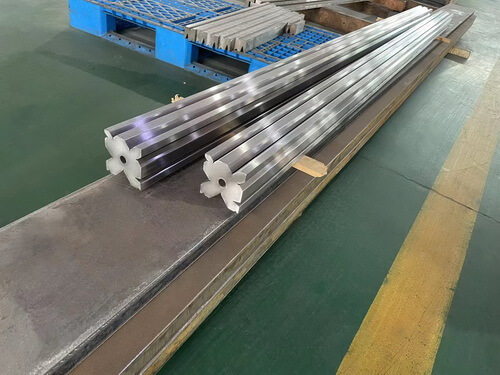
How Does a V Block Work in Sheet Metal Bending?
The bending process begins with positioning the sheet metal over the V block’s groove. The press brake’s ram lowers the punch to a matched bottom die —clamps the sheet, forcing it into the groove. It typically features a V-shaped groove cut into a metal vee block, allowing a punch to press the sheet metal into the groove for controlled bending. This creates plastic deformation along the bend line.
V blocks are indispensable in air bending, bottom bending, and coining techniques. They allow for versatility in bend angles—acute, obtuse, or 90 degrees—by varying the punch’s descent depth.
- Air Bending: The punch stops short of the groove bottom, using springback (material rebound) to achieve the angle. Requires less force but precise calculations.
- Bottom Bending: The punch presses the sheet fully into the groove for sharper bends, ideal for tighter tolerances.
- Coining: Extreme pressure “coins” the metal into the die, minimizing springback but risking tool wear.
Factors like material thickness (T), ultimate tensile strength (UTS), and V-opening affect the metal bending result. For instance, stronger materials like stainless steel (UTS ~70 Kg/mm²) need larger openings than mild steel (UTS ~42 Kg/mm²).
Types of V Blocks and Applications
V blocks come in various configurations to suit different applications. At JSTMT, our press brake tooling includes customizable V blocks to match your shearing and bending needs.
- Single V-Die: Basic design with one groove; economical for standard jobs.
- Double V-Die: Two grooves on opposite sides for versatility without tool changes.
- Multi-V Die: Up to four grooves, ideal for high-mix production.
- Acute Angle Dies: Narrow angles for sharp bends.
- Gooseneck or Offset Dies: For complex parts with obstructions.
Selection Guide: How to Choose the Right V Block in Sheet Metal Bending
Proper selection leads to better outcomes in high-volume production, though factors like machine tonnage must be balanced. The selection process is guided by three main factors: material thickness, the required inside radius, and the flange length.
1. Bend Radius Formula
The inside bend radius (R) is determined by the V-die opening. When air bending mild steel, the inside bend radius forms at approximately 16 percent of the V-die opening. You must ensure the chosen V-die opening will produce an R that is not less than the minimum sharp bend radius specified for the material.
R = V / 8 (mild steel).
Adjust: Aluminum (R × 0.8), Stainless Steel (R × 1.4).
2. Minimum Flange Length
The V-die opening must be narrow enough so that the part’s leg or flange length can fully rest across the die shoulders without falling. A short flange requires a smaller V-opening
For 90° bends: b = V × 0.67.
Adjustments: 30° (b × 1.6), 60° (b × 1.1), etc.
3. V-Opening Recommendations Table, V=8T Rule
Determine the V-Opening Width (V-Ratio): The most essential guideline for air bending is to select a V-opening based on the material thickness (T).
- The “Rule of 8” is a time-tested guideline, stating that the V-die opening should be approximately eight times the material thickness (approx 8 times T) for low carbon steel.
- The general range for air bending steel is 6 to 8 times the sheet thickness.
| Material Thickness (T in mm) | Mild Steel V-Opening (mm) | Aluminum Adjustment | Stainless Steel Adjustment | Required Tonnage (t/m) Estimate |
| 1-3 | 8-24 | V × 0.8 | V x 1.4 | 5-15 |
| 3-6 | 24-48 | V × 0.8 | V x 1.4 | 15-30 |
| 6-12 | 48-96 | V × 0.8 | V x 1.4 | 30-60 |
| 12+ | 96+ (use 10×T) | V × 0.8 | V x 1.4 | 60+ |
Selecting a V block involves balancing material properties, bend requirements, and machine capabilities.
A key rule: V-opening = 8 × T for mild steel up to ½ inch thick, adjusting to 10 × T for thicker sheets.
Tips for Selection:
Avoid V-openings narrower than 6×T to prevent cracking.
Consider tonnage: Larger openings reduce force needs.
Test for springback, especially in high-UTS materials.
For manufacturers like us at JSTMT, producing durable V-blocks as part of our press brake tooling lineup ensures compatibility with our shearing machines and press brakes, helping clients achieve precise, repeatable bends. If you’re looking to integrate V blocks into your press brake operations or need custom tooling, contact us for custom solutions.


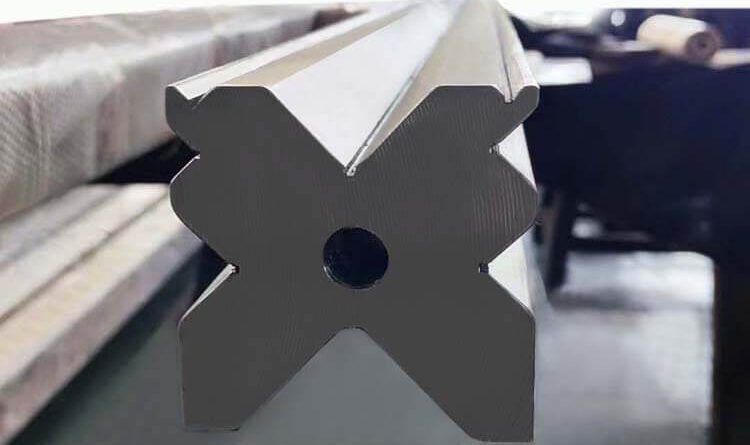


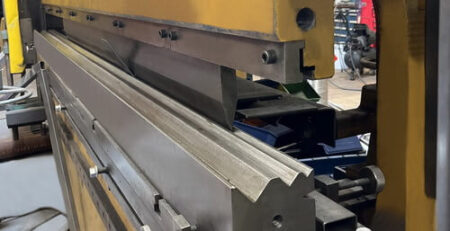
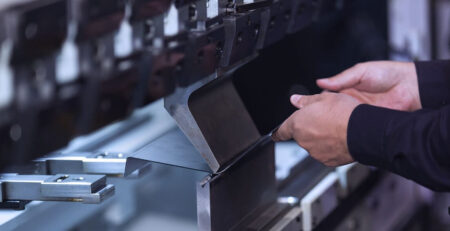
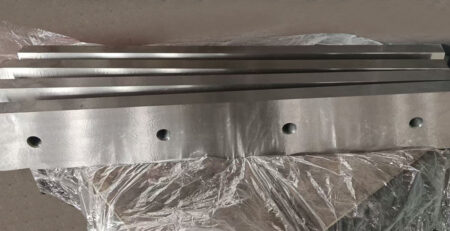
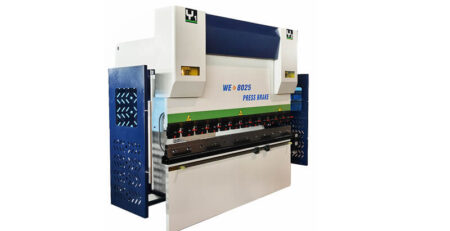
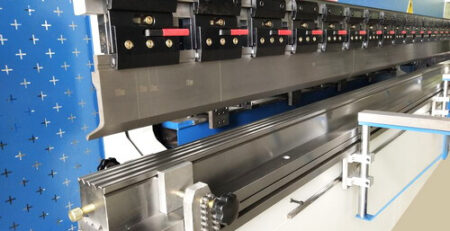
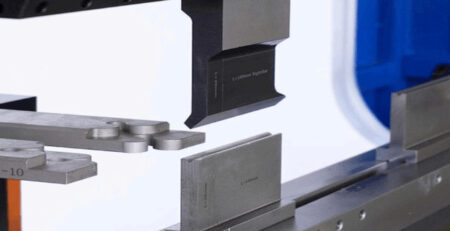
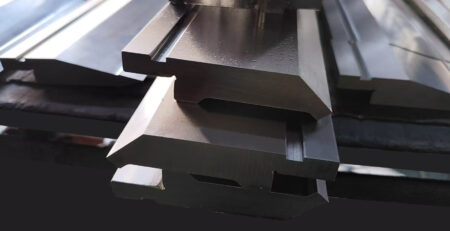
Leave a Reply